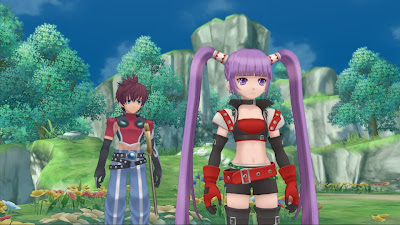A Primer on the Tales of Series
In the short history of Japanese RPG’s, few franchises have had as many regular releases as the Tales franchise. Since the release of Tales of Phantasia in 1995, the franchise has seen 12 main titles, each with a unique theme and storyline. As the franchise became popular, the Namco Tales Studio worked split into two teams, Team Destiny and Team Symphonia. These two studios developed unique styles that differentiated them from each other. The two teams were recently merged together with the release of the latest tales game, Tales of Xillia. The games released have combined worldwide sales of 13 million units. I will explore what makes this franchise unique in the world of video games.
Game Titles
- Tales of Phantasia
- Tales of Destiny
- Tales of Eternia
- Tales of Destiny 2
- Tales of Symphonia (Team Symphonia)
- Tales of Rebirth (Team Destiny)
- Tales of the Abyss (Team Symphonia)
- Tales of Innocence (Team Destiny)
- Tales of Vesperia (Team Symphonia)
- Tales of Hearts (Team Destiny)
- Tales of Graces (Team Destiny)
- Tales of Xillia (Team Symphonia & Destiny)
The hallmark of a Tales game is the battle system, which is an action-based battle system. This system is called the Linear Motion Battle System, and every single tales game has used a variation of this battle system. Battles are engaged by hitting an enemy character; it is not randomized like Final Fantasy or Dragon Quest. Once a battle starts, the first player controls the character on screen and the artificial intelligence controls the other characters. Additional players can join in battle, controlling the other party members in the fight. Buttons correspond to single attacks or spells that can be used to chain attacks to create combos. Battles in a Tales game have traditionally taken place fighting in a 2D plane, in that the characters can only move left and right in battle. Tales of the Abyss changed that with the addition of “free run” that gave them the ability to move in three dimensions. Since then there have been many changes and tweaks on the battle system, for example Tales of Graces has a much stronger combo and action-based component than Tales of Vesperia that focuses on strategy.
 |
| Sheena, one of the more popular characters in the franchise. |
We all love eating, and the Tales franchise knows it since cooking is a strong component in the tales franchise. On their adventures to save the world, characters in the Tales games generally cook food. Ingredients for cooking such as egg, rice, meat, can be bought in a store or can be won on a battlefield. Cooking is handled differently from game to game, where some games have characters cooking from a recipe to combining ingredients in some magical pot to come up with food. The Tales series takes cooking seriously, since there are many skits and plot points that poke fun of certain characters that are not good at cooking. Likewise, they also joke about characters who are good cooks who do not look the part.
 |
| Fast paced battles! |
 |
| Milla from Xillia by Mutsumi Inomata |
Namco Tales Studio had two main teams that did the Tales games. Team Destiny built a reputation on having a strong battle system and being strongly detail oriented. It generally would come at a cost of having a weaker storyline and a shorter game experience. Team Symphonia built a reputation on having a great storyline and a strong character focus. It would normally be developed in an epic game that would run much longer than a Team Destiny game. This comes at a cost of having a weaker battle system, having a narrative that would involve lots of backtracking, and lead to many complaints that the game was too long. As mentioned before, they had different artists, with Mutsumi Inomata doing the art for Team Destiny and Kosuke Fujishima doing the art for Team Symphonia. The two tales studios would use the same composers, Motoi Sakuraba and Shinji Tamura, but Sakuraba’s music in Team Symphonia games tend to be better than in the Team Destiny games. In Tales of Xillia, the two teams were merged back into one team. Namco Bandai also absorbed the Namco Tales Studio into its internal development team, so how the Tales franchise will be handled in the future is one big question mark.
 |
| Yuri from Vesperia |
The Tales franchise is a unique franchise; it is one of my favorite gaming franchises. The number of games may seem daunting at first. Once you look at the games, you see that each game is an independent game that can be played on its own, like Final Fantasy. You can be like me and get started on Tales of Phantasia, or you can play the newest USA release of Tales of Graces f. Regardless, you are joining a unique and interesting franchise that separates itself from the pack of RPG’s out there.
Kris Zoleta started working in Anime Expo as a staffer in Manga Library. He worked in Staff Service in Anime Expo 2006 and became the manager of Manga Lounge from Anime Expo 2007-2010. He is currently serving on the Board of Directors for the Society for the Promotion of Japanese Animation, the 501(c)(6) non-profit behind Anime Expo and is one of the most recognized cosplay photographers in the West Coast.
Links
Tales of Graces Website
Tales of the Abyss 3DS JPN
Tales of Xillia JPN
Tales series facebook
95% of Tales Buyers are Female






Comments